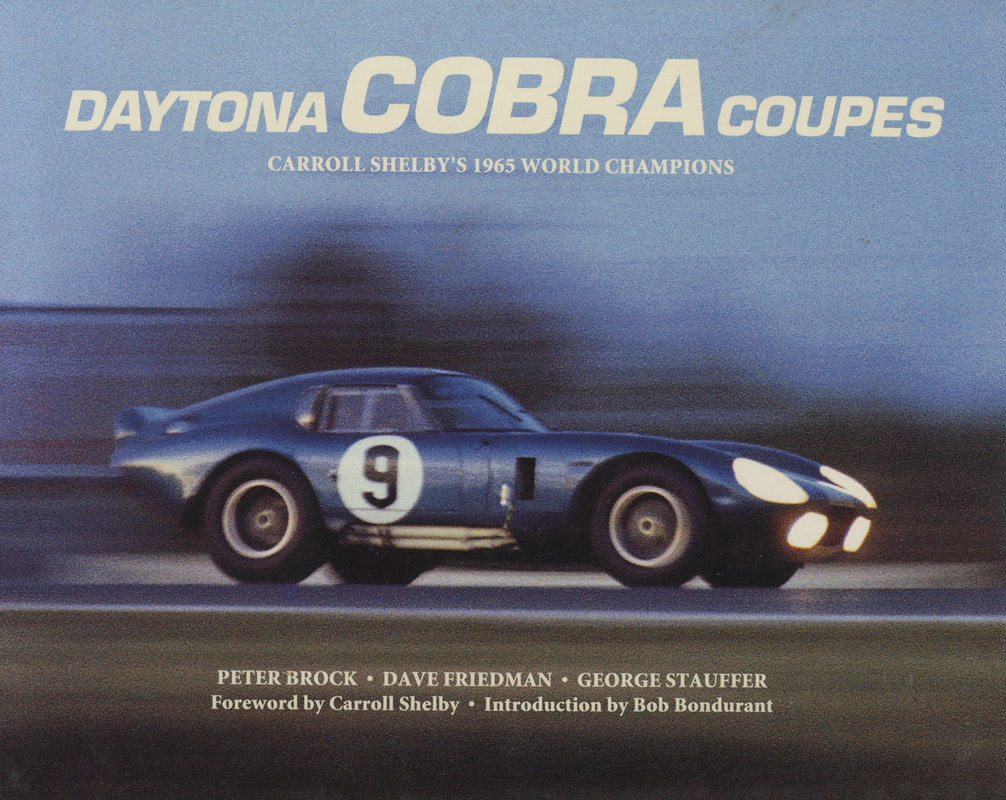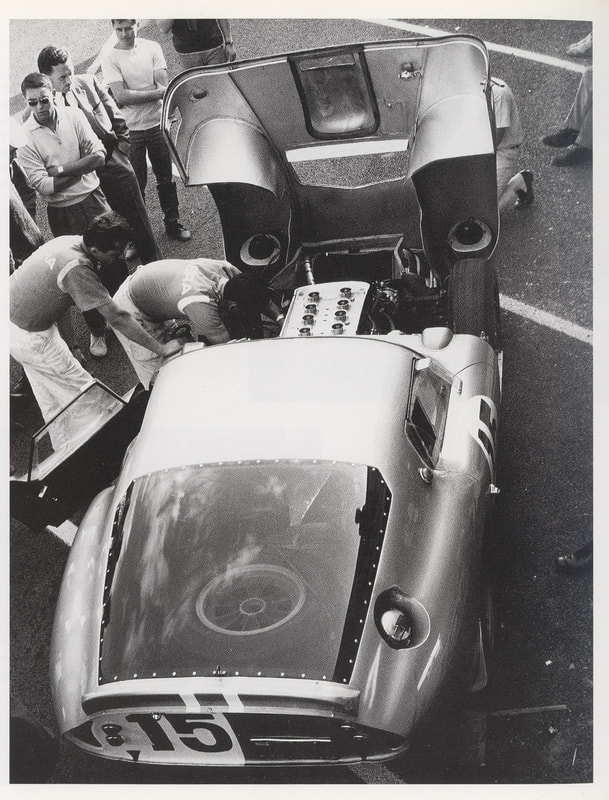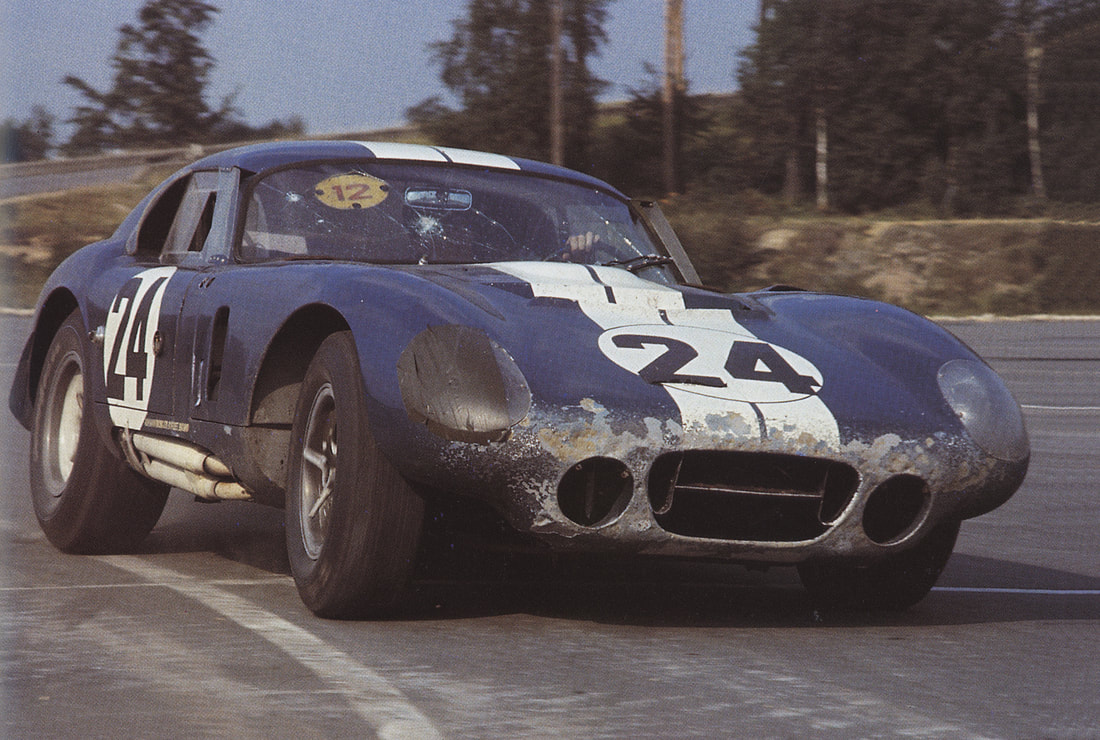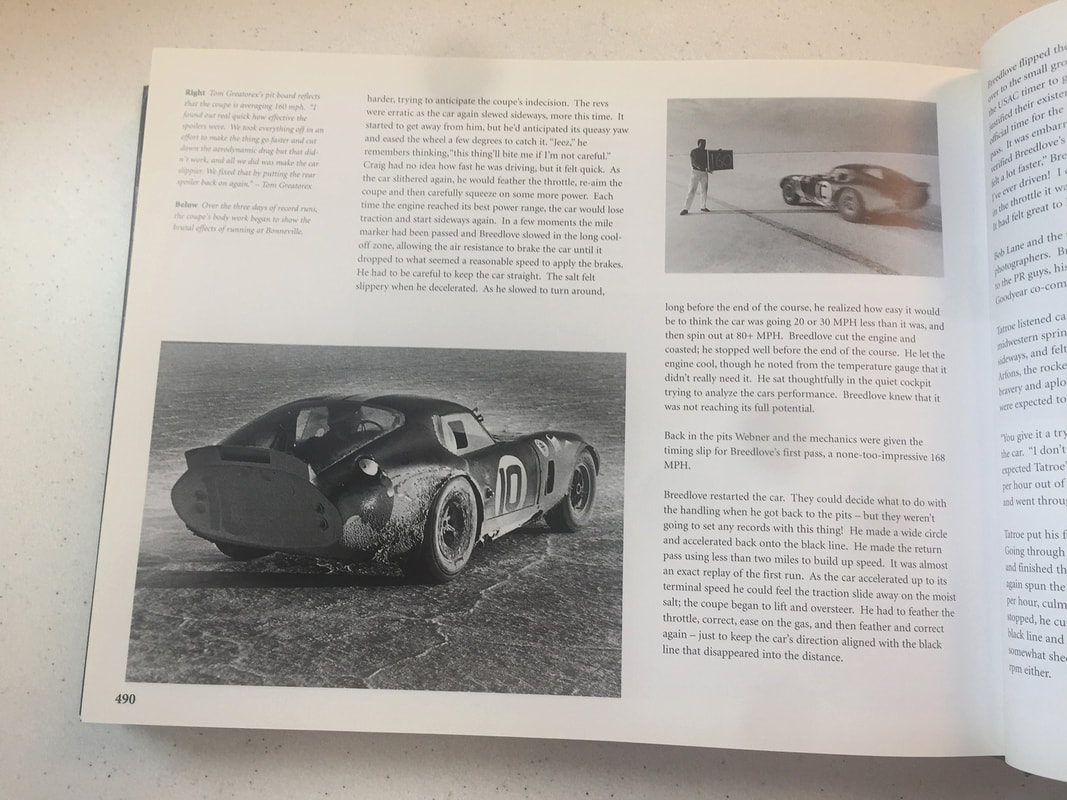|
Sept/Oct 2019 edition Issue #7 AutoMobilia Resource Magazine Frank Barrett Rarity counts. Whether you collect cars or books, the scarce ones are often the most valuable, the hardest to obtain. Here, both book and subject fall into that same category. A mere six Coupes were built, and they change hands only every Guardsman (or Viking) Blue moon, and for astronomical sums. Likewise, their history book, Daytona Cobra Coupes, remains hard to find and to afford. People hang onto good cars – and good books. Who better than Peter Brock to describe the Coupes’ history? In engaging detail, he leads you through the tedious fabrication, the race dramas, and mad thrashes necessary to beat the European competitors. Although stretched beyond its limits, the team succeeded. Photographer Dave Friedman documented Shelby American’s efforts. Hundreds of excellent period black-and-white images – from fabrication to pit work to finish line – give this book an authentic, you-are-there feeling, often missing in other histories. Enthusiast, owner, and restorer George Stauffer conceived and published the book. His own introduction defines its credibility, “Pete’s words and Dave’s photos and captions tell the coupe’s story as only insiders can...” In America, the Cobra roadster wiped out the Corvettes, but it had the aerodynamics of a barn, so Shelby needed a slicker car for the faster European tracks. Pete Brock risked his job at Shelby American to design the Coupe. To maximize speeds, he minimized drag. Lacking a wind tunnel – and despite naysayers, ace fabricator Phil Remington included – -Pete drew what he believed would work.
The Coupe’s debut at Daytona in early 1964 was a fiery disaster but at least gave the car its name. Brightened mainly by a Le Mans class win, 1964 was a learning year, but in 1965 things took off. With the help of Cobra roadsters and co-entrant Alan Mann – and despite Enzo Ferrari’s politicking – the Coupes became the first American car to win a World Championship. Nevertheless, the used-up cars were retired and later sold for a song. The new GT40 had made them the final, the ultimate Cobras. Each Coupe’s tale is told, from their origins in America and Italy through their racing careers to their preservation in collections; since the book was written in 1995, recent transfers are not shown (addendum, anyone?). One chapter documents the provenance of all–CSX 2286, 2287, 2299, 2300, 2601, and 2602–as well as CSX 2131 (Willment), A98 (AC), CSB 3054 (the unborn 427), and CSX 3055 (Willment/Ghia). Their competition records include dates, car numbers, colors, drivers, results, and notes. One discrepancy: on page 525, CSX 2299’s race dates are shifted. Typesetting was a little weak back then, and by now the aging varnish on the dust wrappers may have cracked, but what you’re getting here is genuine first-hand testimony. A total of 3000 standard-edition were printed plus another 400 “special editions” had a Cobra chassis plate attached with the book number etched on it plus the signatures of every living driver and team member (44 autographs!), priced at $400. Today’s prices for excellent copies of the standard edition range from $1,000 to $1,500, and the ultra-rare “special edition” copies sell for about $4000. Find a copy of either edition, and you’ll hang onto it! Frank Barrett To read more great columns like this one from expert Frank Barrett...
|
BooksFrank Barrett has collected books since 1951 and in 1978 began selling Porsche titles and out-of-print books. ArchivesCategories |
Home
|
Subscribe
|
|
Automobilia Resource LLC
1217 Cape Coral Pkwy East #178 Cape Coral, Florida 33904 Main office: 954-579-5280 Subscriptions: 224-558-8955 Editor: 631-258-9887 |
Copyright © 2023 Automobilia Resource LLC. All Rights Reserved






 RSS Feed
RSS Feed